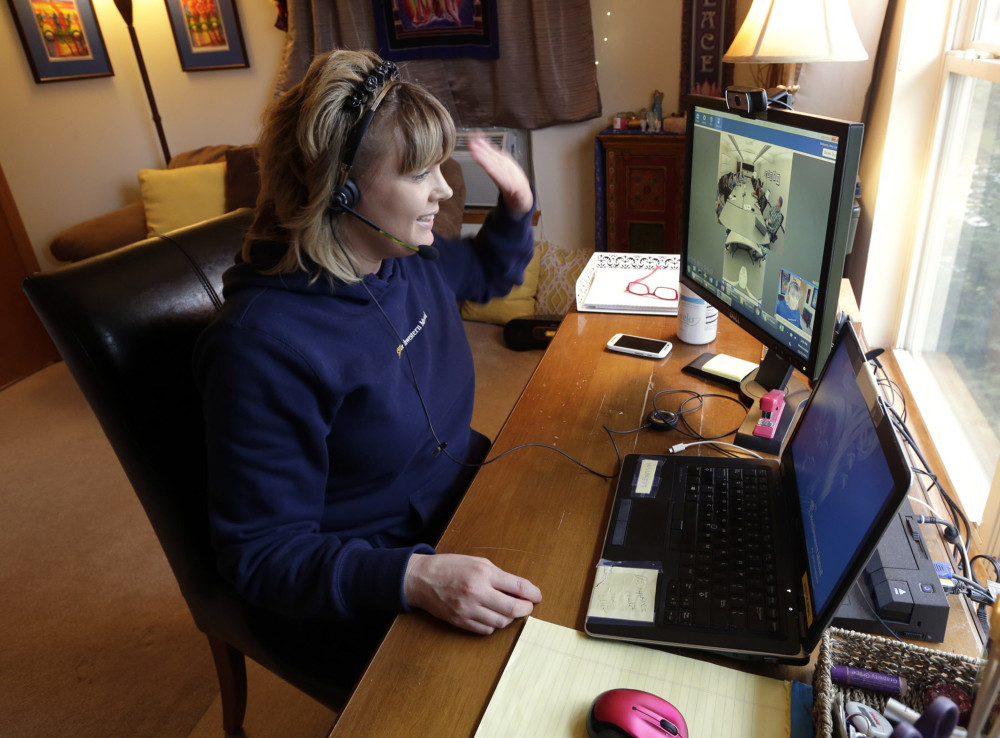By Liz Reyer
Star Tribune (Minneapolis)
WWR Article Summary (tl;dr) According to business coach Liz Reyer, succeeding in your at-home office will require both creativity and discipline, but fairly simple steps can ease the way.
Star Tribune (Minneapolis)
Q: I’ve been working from home for the past six months and am struggling with maintaining energy and focus. Sometimes I feel very isolated and sometimes I can’t get into a good rhythm to remain productive. What should I do to adapt?
-Tyra, 44, marketing communications writer
A: Understand your needs and design workdays that build in ability to focus and opportunity for interaction.
What is your relationship with structure? When you go into an office, there is some automatic structure applied, even in the act of leaving home to commute to work.
At home, this basic “at work” definition may be lacking, and you also don’t have the more defined structure of others around you taking breaks, going to lunch, etc.
If you miss these clear boundaries, create them at home. This may help you boost productivity and energy.
In the morning, set break times for yourself. Consider leaving your workspace during those times, as you might do in your office, maybe having a quick walk or stretch break.
While you are getting on track, avoid the temptation to have home tasks spill into the workday. It’s easy, say, to fold a load of laundry when you’re stuck, but that can just become a form of procrastination.
The isolation factor also needs to be given serious attention. Consider all of the interactions you have during the day when you go into the office.
Many are purely social, but give a sense of connectedness and relationship that humans crave.
Think about ways you can replicate that in your current routine.
For example, even though you work from home, you are still part of a team. Instead of saying good morning in person, you could have a quick hello via chat or phone. You could even set up virtual coffees on a regular basis to maintain work friendships.
Look for social opportunities within your community, as well. A quick walk could give you the chance for a bit of interaction with neighbors. Or set up coffee get-togethers with others in your community to ensure that you’re seeing other people live and in person on a regular basis.
There is also a loss that cuts across the isolation and productivity aspects: the loss of thinking partners.
Consider how often you get stuck when you’re working through a problem.
Or perhaps you have a new idea and want to get some initial feedback. In situations like this, for many of us the natural thing to do is to get up and find someone to talk it through with.
Even if you are not in person, you can still get the insights you are seeking in ways that are emotionally satisfying.
The low tech approach is to jump on the phone, or ping people using your company’s chat tool.
Just like you would if you were in person, ask if they have a moment for you to run something by them. This sounds so basic, but without the visual cues that someone is open to chatting, the barrier of reaching out can seem hard to overcome.
Succeeding in your at-home office will require both creativity and discipline, but fairly simple steps can ease the way.
___
ABOUT THE WRITER
Liz Reyer is a credentialed coach with more than 20 years of business experience. Her company, Reyer Coaching & Consulting, offers services for organizations of all sizes. Submit questions or comments about this column at www.deliverchange.com/coachscorner or email her at liz@deliverchange.com.
___
(c)2017 Star Tribune (Minneapolis)
Visit Star Tribune (Minneapolis) at www.startribune.com
Distributed by Tribune Content Agency, LLC.














































































































































































































































































































































































